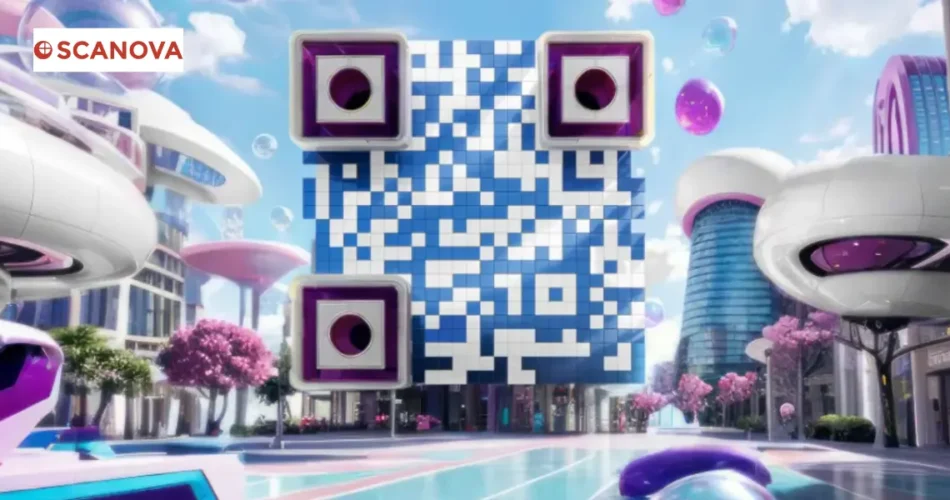QR Code advertising campaigns have become increasingly popular in recent years due to their ability to engage consumers and drive traffic to websites or landing pages.
As a unique and interactive way to bridge the gap between physical and digital marketing, QR Code ads offer a great opportunity for businesses to connect with their target audiences in a meaningful way.
In this article, we’ll explore the best practices to create successful QR Code advertising campaigns, tips to optimize QR Codes for maximum engagement, and case studies of brands that have effectively used QR Codes.
Let’s get started!
A. What are QR Code Advertising Campaigns?
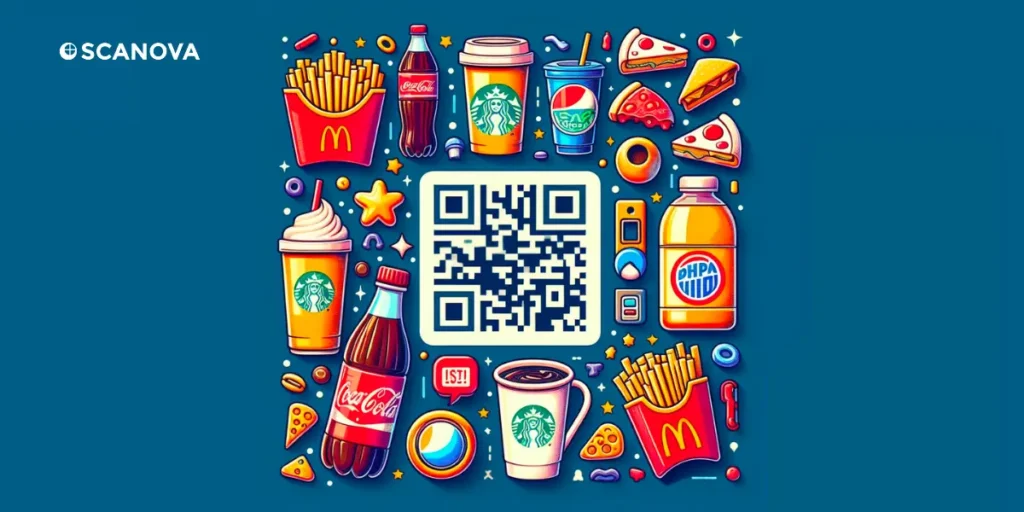
QR Code advertising campaigns leverage the power of QR Codes (Quick Response codes) to connect with consumers offline and usher them into the digital realm.
Imagine a bus stop ad with a QR Code. By scanning it with their smartphones, viewers can be directed to a website, product information, a fun interactive experience, or even exclusive discounts.
B. Some successful QR Code advertising campaigns by brands
1. Nike
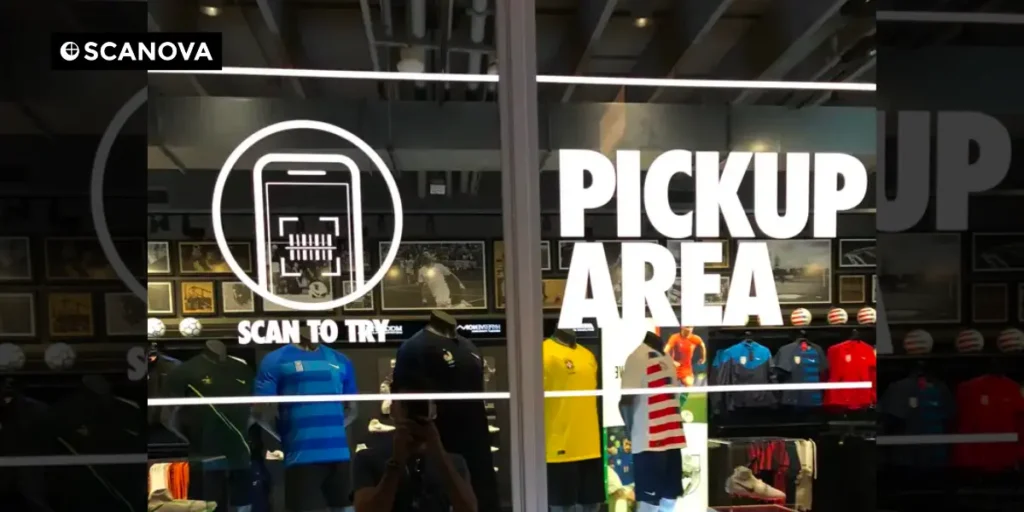
Nike uses QR Codes on its products to provide customers with additional information about the product, such as its origin, materials used, and sustainability efforts.
This QR Code advertising campaign allowed Nike to enhance transparency and engage customers with the brand’s values.
For example, Nike used QR Codes on its sneakers to provide information about the manufacturing process and materials used, emphasizing its commitment to sustainability.
2. Starbucks
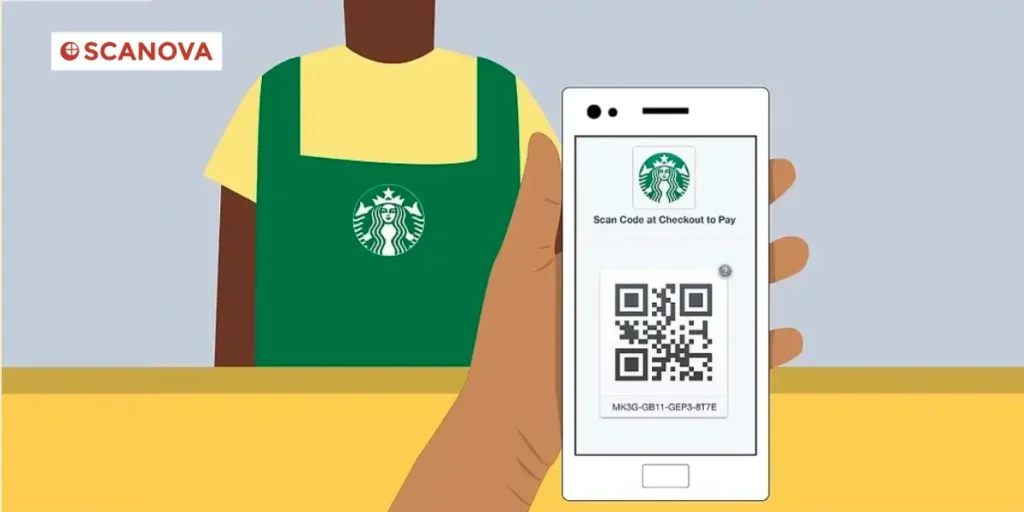
Starbucks utilized QR Codes on its cups to enable customers to scan and pay for their drinks using the Starbucks app.
Additionally, Starbucks incorporated QR Codes into its loyalty program, allowing customers to earn rewards and receive personalized offers by scanning QR Codes on their cups or receipts.
3. Coca-Cola
Coca-Cola employed a QR Code advertising campaign on its packaging to launch interactive marketing campaigns.
For instance, Coca-Cola used QR Codes on its cans and bottles to direct customers to exclusive content, such as behind-the-scenes videos, interactive games, or promotions.
This strategy helped Coca-Cola enhance customer engagement and brand loyalty.
4. Amazon
Amazon integrated QR Codes into its physical stores, such as Amazon Go, to streamline the shopping experience.
Customers could scan items using the Amazon app and seamlessly pay for their purchases without the need for traditional checkout lines.
This implementation of the QR Code advertising campaign contributed to Amazon’s reputation for innovation and convenience in retail.
5. Burger King
Burger King utilized QR Codes on its packaging to enhance customer engagement and drive sales.
For example, Burger King incorporated QR Codes into its marketing campaigns to offer customers access to exclusive deals, coupons, or interactive games.
This strategy helped Burger King attract and retain customers by providing value-added experiences through a QR Code advertising campaign.
6. McDonald’s
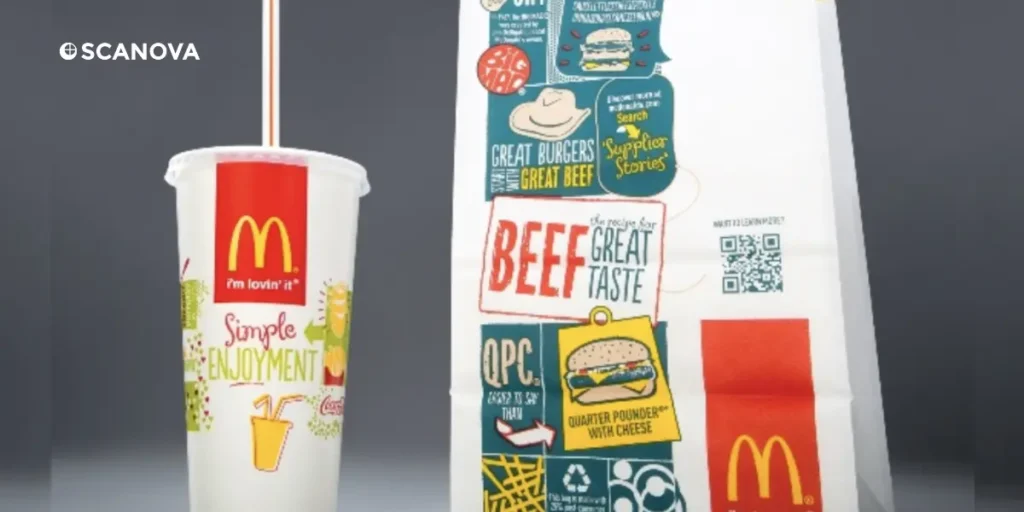
McDonald’s leveraged QR Codes in its advertising campaigns to drive app downloads and increase customer loyalty.
McDonald’s encouraged customers to scan QR Codes on packaging or promotional materials to unlock special offers, discounts, or rewards through its mobile app.
This approach facilitated customer retention and generated repeat business for McDonald’s.
7. Sephora
Sephora integrated QR Codes into its stores and product packaging to provide customers with enhanced shopping experiences.
For instance, Sephora allowed customers to scan QR Codes on products to access detailed information, reviews, and tutorials, helping them make informed purchasing decisions.
This use of a QR Code advertising campaign strengthened Sephora’s position as a leader in beauty retail and customer engagement.
8. Toyota
Toyota utilized QR Codes in its advertising campaigns to drive customer interactions and facilitate lead generation.
For example, Toyota encouraged customers to scan QR Codes in print ads or on billboards to schedule test drives, request brochures, or find nearby dealerships for further inquiries.
This approach enabled Toyota to capture leads and convert them into potential customers.
9. L’Oréal

L’Oréal incorporated QR Codes into its product packaging to provide customers with personalized experiences and access to additional content.
For example, L’Oréal enabled customers to scan QR Codes on products to access tutorials, product reviews, and personalized recommendations through its mobile app.
This use of a QR Code advertising campaign enhanced the overall shopping experience for L’Oréal customers.
10. Pepsi
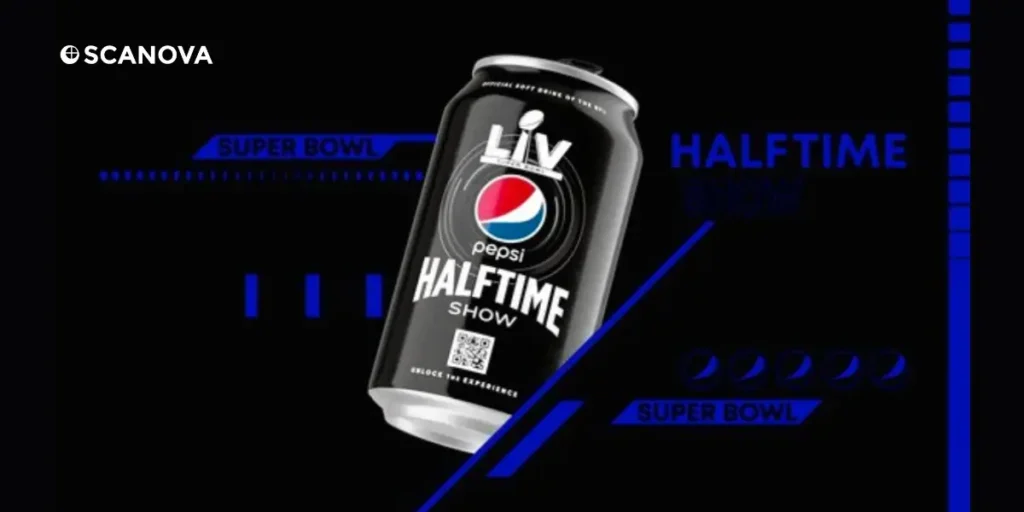
Pepsi utilized QR Codes in its marketing campaigns to engage customers and drive brand awareness.
For instance, Pepsi encouraged customers to scan QR Codes on its packaging to access exclusive content, such as behind-the-scenes footage, celebrity interviews, or interactive experiences.
This strategy helped Pepsi create buzz around its products and deepen customer engagement.
11. Walmart
Walmart integrated QR Codes into its products and signage to enhance the shopping experience for customers.
Walmart allowed customers to scan QR Codes on products to access additional information, such as product reviews, pricing, and availability.
Moreover, Walmart uses QR Codes on its signage to provide customers with personalized offers, promotions, and in-store navigation assistance.
12. Adidas
Adidas employs QR Codes in its products to deliver personalized experiences and engage customers digitally.
For example, Adidas enabled customers to scan QR Codes on its products to access personalized content, such as workout routines, product recommendations, or exclusive offers.
This use of QR Codes helped Adidas strengthen its connection with customers and drive sales.
13. IKEA
IKEA utilizes QR Codes in its catalogs and stores to enhance customers’ shopping experience.
IKEA allows customers to scan QR Codes in its catalogs or on product tags to access additional information, such as assembly instructions, design ideas or product specifications.
This implementation of QR Codes simplified the shopping process for IKEA customers and provided them with valuable resources.
14. Heineken
Heineken integrated QR Codes into its packaging to launch engaging marketing campaigns and drive customer interactions.
For instance, Heineken encouraged customers to scan QR Codes on its packaging to access exclusive content, participate in contests, or unlock special promotions.
This strategy helped Heineken create memorable experiences for customers and increase brand loyalty.
15. Ford
Ford utilized QR Codes in its advertising campaigns to generate leads and drive customer engagement.
For example, Ford encouraged customers to scan QR Codes in its ads or on promotional materials to schedule test drives, request brochures, or find nearby dealerships for further inquiries.
This use of QR Codes facilitated customer interactions and helped Ford capture potential leads effectively.
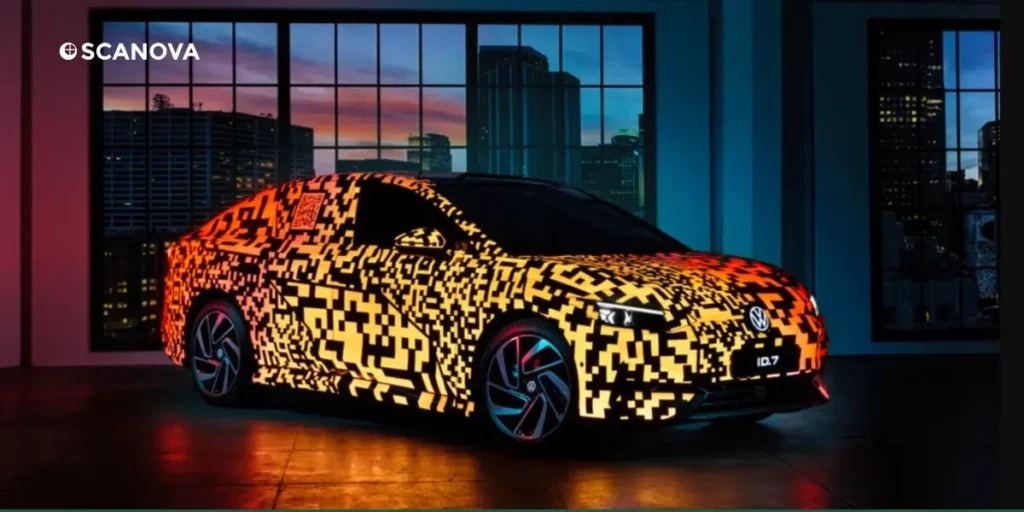
16. In Jan 2023, Volkswagen tested its upcoming electric vehicle by camouflaging it with QR Codes that redirected to Volk-swagen’s landing page-prompting users to enter their email to receive exclusive information and photos of the new model, with a share function for social media.
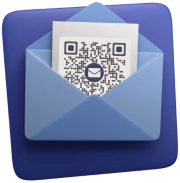

C. Why Use QR Codes in advertising?

Did you know that the average scan rate of QR Codes lies between 10%-30%? That’s way higher than traditional direct mail (with an average engagement rate of 4.4%) and catalogs (4.3% average engagement rate).
QR Codes offer a plethora of benefits for advertisers:
- Bridging the Offline-Online Gap: QR Codes seamlessly connect traditional print, billboard, or packaging advertising with the interactive world online.
- Measurable Engagement: Unlike static ads, QR Codes allow advertisers to track scans, user demographics, and even purchase conversions, providing valuable campaign insights.
- Cost-Effective: QR Codes themselves are inexpensive to create, and dynamic QR Codes, which can be edited after printing, offer even more flexibility.
- Increased Engagement: QR Codes add an interactive element to advertising, enticing viewers to take the next step and learn more.
D. Choosing the right marketing strategy for your QR Code campaign

When going for a QR Code advertising campaign, it’s important to align your strategy with campaign objectives.
We’re always looking for new strategies and approaches to get people’s attention. We wanted to try out a campaign with these QR codes and add an element of mystery. The idea was that we would entice and intrigue people. The people who might scan the codes are technologically minded, so they would know about the code and know what to do with it.
Darren Barefoot, Program Manager, Big Wild
Consider factors such as your target audience, campaign goals, and budget to determine the most effective approach.
Whether you opt for social media integration, email marketing, or in-store promotions, selecting the right marketing strategy will play a significant role in the success of your QR Code advertising campaign.
In the following section, we will delve into various marketing strategies that can complement your QR Code campaign and help you achieve your desired outcomes.
Stay tuned for expert insights on maximizing the impact of your QR Code ads.
1. Designing your QR Codes for maximum impact
Once you’ve established your marketing strategy, it’s essential to focus on the design of your QR Codes.
A well-designed QR Code not only attracts attention but also enhances user engagement. Consider factors such as size, color contrast, and placement to ensure that your QR Code is easily scannable and noticeable.
Incorporate your brand elements creatively while maintaining clarity and simplicity.
By designing your QR Codes thoughtfully, you can increase the likelihood of user interactions and drive the success of your advertising campaign.
2. Tracking and analyzing the effectiveness of your QR Code campaign
Once your QR Code advertising campaign is launched, monitoring its performance is crucial for success.
Utilize tracking tools to gather data on scan rates, user demographics, and conversion rates.
Analyze this information to understand user behavior and fine-tune your campaign strategy accordingly.
A/B testing can also be effective in optimizing your QR Code design and content for better results.
By consistently monitoring and analyzing the effectiveness of your QR Code campaign, you can identify areas for improvement and make data-driven decisions to enhance its impact.
3. Integrating QR Codes into your overall marketing strategy
To maximize the impact of your QR Code advertising campaign, seamlessly integrating QR Codes into your overall marketing strategy is essential.
Using QR codes is a fresh new approach for Kokanee in our product packaging and provides a richer brand experience.
Mike Bascom, Marketing Manager, Kokanee
Ensure that QR Codes are strategically placed across various marketing channels, such as print advertisements, product packaging, social media posts, and email newsletters.
Consistent branding and a clear call-to-action can enhance user engagement with your QR Codes.
By seamlessly incorporating QR Codes into your existing marketing initiatives, you can create a cohesive and immersive experience for your target audience.
4. Avoiding common mistakes in QR Code advertising
To prevent potential setbacks in your QR Code advertising campaigns, it’s crucial to steer clear of common mistakes. Keep in mind that the QR Code’s destination must align with its context.
Avoid long URLs and ensure that the landing page is mobile-friendly, providing valuable content or incentives for users.
Testing your QR Codes across various devices and ensuring they are scannable in different lighting conditions is essential.
Additionally, always track and analyze the performance of your QR Code campaigns to optimize future strategies effectively.
Stay informed to sidestep pitfalls and maximize the effectiveness of your QR Code marketing efforts.
5. Choosing the right QR Code generator for your QR Code advertising campaign
A QR code generator is the starting point for your interactive advertising journey. Just like building a house, you need a solid foundation.
Many global brands have implemented successful QR Code advertising campaigns with Scanova.

Here’s why selecting the right generator is crucial:
- Features & Functionality: Basic generators might only create static codes, limiting your options. Consider features like dynamic codes (editable content!), analytics tracking, and error correction for optimal performance.
- Customization & Design: Make your code stand out! Look for generators that allow logo integration, color customization, and creative frame designs to enhance your brand message. Try Scanova!
- Security & Data Tracking: Privacy matters! Choose a generator with secure encryption and clear data ownership policies. If tracking scans is important, ensure the generator offers insightful analytics. Since Scanova is developed by Trycon, which is GDPR compliant and is 27001:2013 certified, you can rely on it
- Pricing & Ease of Use: Generators range in price from free to premium. Consider your budget and campaign needs. Opt for a user-friendly interface to streamline your workflow.
By investing in a robust QR Code generator with the right features, you’ll lay the groundwork for a successful and engaging QR Code advertising campaign.
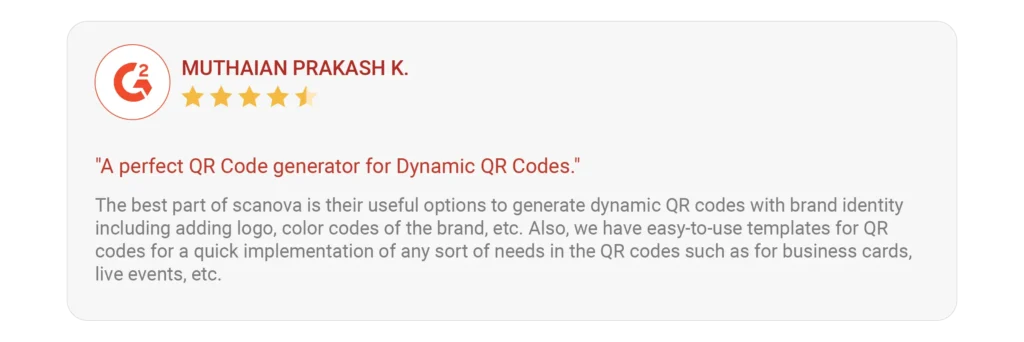
E. Creative QR Code Campaign Ideas
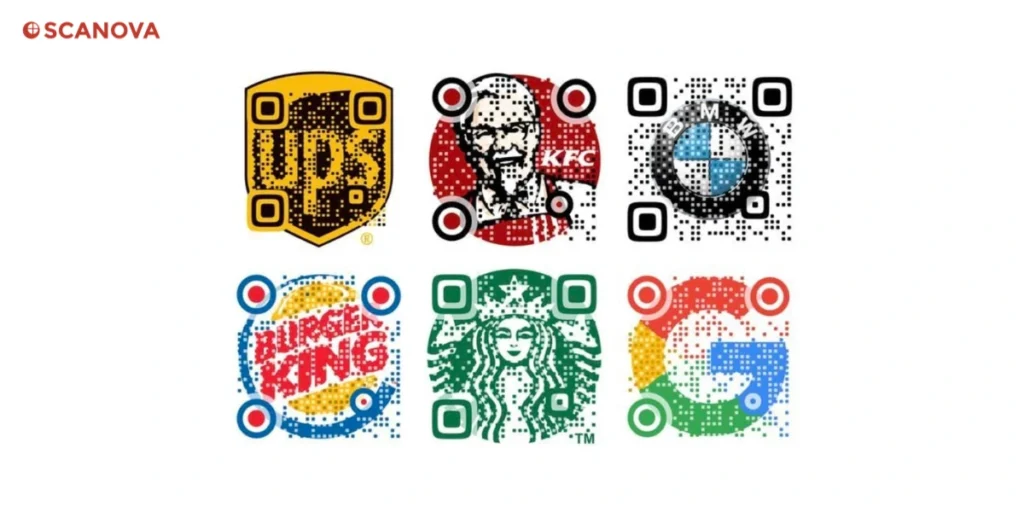
Here are some inspiring ways to use QR Codes in advertising campaigns:
- Exclusive Offers & Discounts: Hidden discounts or special promotions behind a QR Code can incentivize scans and drive sales.
- Interactive Content: QR Codes can lead to augmented reality experiences, 360° product views, or fun quizzes, making advertising more engaging.
- Data Collection: QR Codes linked to surveys or feedback forms can provide valuable customer insights.
- Gamification: Integrate QR Codes into treasure hunts or interactive games to boost brand recall and user engagement
F. Crafting a Successful QR Code Campaign
To maximize the impact of your QR Code campaign, consider these tips:
- Choose the right QR Code generator: One that is trusted by brands and delivers successful results
- Clear Call to Action: Tell viewers exactly what to do after scanning the code.
- Mobile-Friendly Landing Page: Ensure the webpage linked to the QR Code is optimized for smartphones.
- Track and Analyze: Use QR Code analytics to understand user behavior and refine your campaign.
- Strategic Placement: Put the QR Code where your target audience will see it clearly and have a reason to scan it.
G. FAQs: QR Code advertising campaign

1. What is a QR Code advertising campaign?
A QR Code advertising campaign uses QR Codes (Quick Response codes) to bridge the gap between physical advertisements and the digital world.
By scanning the QR Code with a smartphone camera, users are directed to a specific website, landing page, or social media profile, or receive additional information.
2. What are the benefits of using QR Codes in advertising?
- Connects offline to online: QR Codes seamlessly connect traditional print media to digital content, providing a richer experience.
- Measurable results: Track the number of scans to gauge campaign effectiveness and user engagement.
- Cost-effective: QR Codes themselves are inexpensive to create and implement.
- Provides flexibility: QR Codes can direct users to various online destinations based on your campaign goals.
- Easy to use: Scanning QR Codes is simple and requires minimal user effort.
3. What are some common uses of QR Codes in advertising?
- Driving website traffic: Direct users to your company website or a specific product page.
- Offering exclusive discounts or promotions: Provide scannable coupons or promo codes for discounts.
- Collecting leads: Link to a signup form to capture email addresses or other contact information.
- Sharing social media profiles: Encourage users to follow your brand on social media platforms.
- Providing additional product information: Offer detailed product descriptions, specifications, or reviews.
- Downloading apps: Link users directly to your app store page for easy download.
- Unlocking interactive experiences: Integrate AR/VR features or gamified elements.
4. How do I create a QR Code for my advertising campaign?
There are many free and paid QR Code generators available online. Simply choose your desired destination URL and customize the design (optional).
5. What are some things to consider when designing a QR Code for advertising?
- Size: Make sure the QR Code is large enough to be scanned easily from the intended viewing distance.
- Clarity: Use a high-resolution image format to ensure clear readability when printed.
- Call to action: Clearly tell users what they will get by scanning the code (e.g., “Scan for discount”).
- Color contrast: Choose contrasting colors for the QR Code and background to enhance scannability.
6. How do I track the results of my QR Code advertising campaign?
Some QR Code generators offer tracking features that show scan count, user demographics, and even location data. You can also use UTM parameters in your destination URL to track campaign performance within analytics platforms like Google Analytics.
7. Where can I place QR Codes for my advertising campaign?
QR Codes can be placed on various advertising materials: print ads, billboards, packaging, business cards, brochures, posters, product displays, and even in-store signage.
8. Do people still use QR Codes?
Yes, QR Codes are still a relevant marketing tool, especially when used strategically and with a clear call to action. QR Code usage has grown significantly in recent years, particularly during the pandemic with contactless interactions.
9. What if users don’t have a QR Code scanner app?
Most modern smartphones have built-in QR Code scanning capabilities within their camera apps. Users can also download free QR Code scanner apps from app stores.
10. Are QR Codes safe?
QR Codes themselves are safe. However, it’s important to be cautious about where the code leads. Don’t scan codes from unknown sources, and avoid clicking on suspicious links after scanning.
11. How long will a QR Code last?
Static QR Codes, linking to a fixed URL, will last indefinitely. Dynamic QR Codes allow you to update the destination URL even after the code is printed, offering more flexibility for ongoing campaigns.
12. Can I customize the design of a QR Code?
Yes, many QR Code generators offer options to add logos, colors, and even custom frames to personalize your QR Code for better brand integration.
13. How much does a QR Code advertising campaign cost?
The cost is relatively low. QR Code generation is often free or very affordable. The bigger investment lies in your overall advertising campaign strategy and placement of the QR Code itself (printing costs, etc.).
14. How can I make my QR Code advertising campaign stand out?
- Get creative with placement: Think beyond traditional placements and surprise users with unexpected locations.
- Offer valuable content: Ensure the destination behind the QR Code provides a compelling reason to scan.
- Integrate with other marketing channels: Promote your QR Code campaign across social media and other platforms.
- Track and analyze results: Track the metrics of your campaign and always plan future campaigns based on these insights.
15. How can I track and analyze the results of my QR Code advertising campaign?
Use the data you gather to optimize your campaign. Analyze which placements and CTAs (calls to action) generated the most scans, and adjust your strategy accordingly. A/B testing different QR Code designs can also be helpful.
16. Are there any legal considerations for using QR Codes in advertising?
Generally, no. However, if your QR Code campaign involves collecting user data, ensure you have a clear privacy policy and comply with relevant data protection regulations.
17. What are some common mistakes to avoid with QR Code advertising campaigns?
- Using a tiny or blurry QR Code.
- Not having a clear call to action.
- Linking to a slow-loading or irrelevant destination.
- Not testing your QR Code before deployment.
- Neglecting mobile responsiveness of the landing page.
18. Can QR Codes be used for internal marketing campaigns?
Absolutely! Use QR Codes on employee communications, training materials, or even business cards to share internal resources or links.
19. How can I measure the ROI (Return on Investment) of my QR Code campaign?
Consider the cost of the campaign compared to the value you gained from scans (e.g., website traffic, leads generated, sales conversions). Analyze the data to see if the QR Code element contributed to achieving your marketing goals.
20. What are some emerging trends in QR Code advertising?
- Dynamic QR Codes with real-time data updates.
- Integration with Augmented Reality (AR) experiences.
- Using QR Codes for contactless payments or ticketing.
The Future of QR Code Advertising
In conclusion, mastering the art of QR Code advertising requires meticulous attention to detail and a strategic approach.
By avoiding common pitfalls and implementing best practices, you can propel your advertising campaigns to success.
Remember to prioritize alignment between the QR Code and its destination, optimize for mobile viewing, and provide valuable incentives to engage users.
Rigorous testing and performance tracking are essential for continuous improvement and campaign optimization.
By staying informed and proactive, you can harness the full potential of QR Code marketing to drive conversions and enhance customer engagement.
Keep pushing the boundaries of innovation to stay ahead in the ever-evolving landscape of digital marketing.


